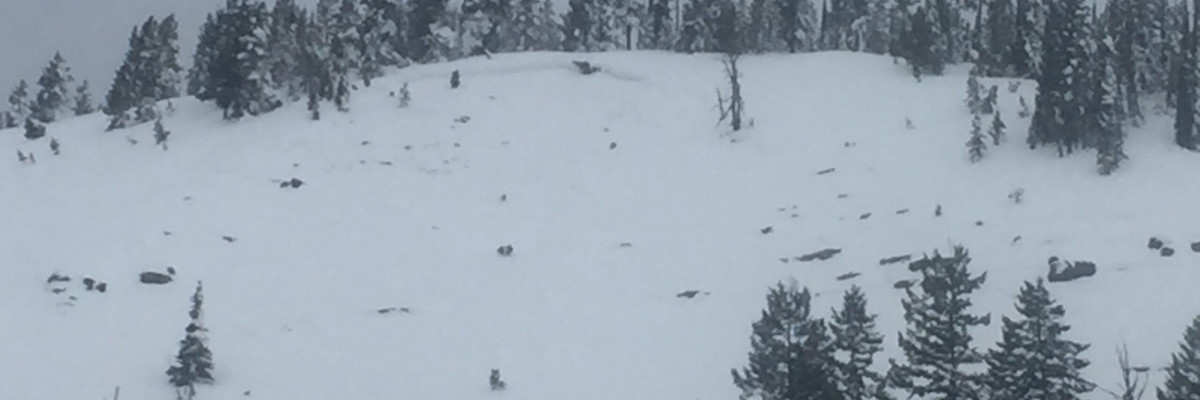The current avalanche danger is CONSIDERABLE above 6,500 feet on wind loaded terrain across the West Central Montana backcountry. All other mountain locations have a moderate avalanche danger. Cautious route finding and careful snowpack evaluation are needed as very large avalanches are possible in isolated areas.
Good morning, this is Logan King with the West Central Montana Avalanche Center’s avalanche advisory for January 6th, 2018. This danger rating does not apply to operating ski areas, expires at midnight tonight and is the sole responsibility of the U.S. Forest Service.
Weather and Snowpack
Moisture has pushed into the region and primarily fell as rain and is shifting to snow early this morning. Rain line is currently around 5,500 feet and continues to drop. Snotels are reporting between .1 and .4 inches of water overnight. Mountain temperatures are above freezing and in the mid 30’s. Winds are out of the W at Point 6 gusting to 21 mph and sustained at 16 mph.
Matt and I were at Wisherd Ridge yesterday and Travis was in the Southern Bitterroot. We found multiple avalanches with up to 4 foot crowns across the advisory area. These slides happened this week and ran full path, up to 2,000 feet. All of the big slides involved a combination of wind slabs and the Thanksgiving crust.
The main avalanche concern today is wind slabs. Wind slabs are located above 6,500 feet and are focused on the eastern half of the compass but vary depending on local winds. Evaluate terrain to see if slopes are wind loaded before committing to avalanche terrain. Wind slab avalanches also have the possibility to step down to deep persistent weak layers (Video).
Unfortunately the Thanksgiving crust was involved in the majority of the large avalanches observed this week so we can’t put this problem to bed yet. A public observation and all of our observers/specialists have been using the phrasing “low probability, high consequence”. The take away is that the Thanksgiving crust is hard to predict, its hard to trigger in stability tests or as a skier/rider but if fails and you are on/or in the path, the outcome will likely, not be a good one. Seriously consider the consequences of getting caught in a slide involving the deep persistent layers before recreating on or near avalanche terrain.
If you are out in the backcountry, please send us your observation, these are very helpful in producing the advisory. A weather update will be issued on Sunday, January 7th.
Ski and ride safe.














